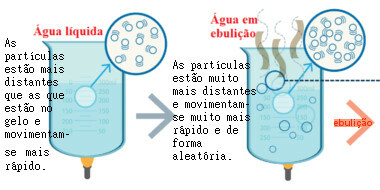Albatross is the name given to a group of birds seascapes that spend much of their life in the open sea. These animals have great flight capacity and can fly for several kilometers in a single day. Some species, according to the Albatross Project, may, during their life cycle, travel around the world. They stand out for having a curved and strong beak, long wings and feet with interdigital membranes.
Unlike other seabirds, the albatross does not stand out as a good diver as it has a plumage thick and waterproof. There are 22 species of albatross in the world, 10 of which are observed in Brazil.
Read too: Why aren't all birds birds?
Albatross Summary
Albatrosses are oceanic seabirds, that is, they are found in the open ocean region.
They visit islands and coastal regions only during the breeding season and to care for their young.
They have long wings, a curved bill and feet with webs between the toes.
They stand out for their effortless flights, as they rely on the help of the wind.
They lay a single egg each breeding season.
They are monogamous birds.
There are 22 species of them in the world, being 10 of them observed in Brazil.
Albatross Characteristics
The albatross is a migratory seabird, belonging to theProcellar orderishaped and Diomedeidae family, very well adapted to life on the open sea. The albatross spends much of its life in the ocean, where it captures its food, flies over the Water and lands on it. Albatrosses only visit islands and coastal regions during their breeding season and to care for their young.
The Diomedeidae family stands out for including the largest flying birds in the world, such as the giant albatross, which has a wingspan of more than three meters. The albatrosses have as striking characteristics long, narrow wings, curved hook-shaped beak and feet with interdigital webs, which are used for swimming, water landing and take-off maneuvers. The hook-shaped beak is a very important feature for albatrosses, as it allows them to catch smooth and slippery animals that are part of their diet.
Albatrosses have glands that specialize in excreting excess salt from their bodies, a very important feature in species that live in the marine environment. These glands are located above the eyes, withdraw sodium chloride from the blood and eliminate a salt-rich solution through the nasal tubes.
The albatross plumage is thick and waterproof., forming a kind of hot air bubble that keeps the bird's body warm and dry and also promotes a high degree of buoyancy. The albatross' thick plumage is extremely important to the animal, but it causes limitation when it comes to diving. The plumage varies between white, brown and bluish black.

The albatross flight allows for great energy savings. These animals keep their wings spread and take advantage of the wind currents. Unlike other birds, albatrosses barely flap their wings, showing a great ability to glide. Because they stay for long periods in open ocean regions, to take off, they run for several meters over the surface of the water.
Video lesson on birds
albatross feeding
The albatross is a bird that feeds on other animals, such as çRustaceous, molluscs and fishes, like sardines. Often, albatrosses are spotted following fishing vessels, trying to get food more easily. Most species feed during the day.
Read more: Hyacinth Macaw — a species that stands out for its vibrant color and size, reaching up to 1 m in length.
Reproduction of albatrosses
albatrosses are animals monogamous, that is, they have a single reproductive partner for their entire life. In general, albatrosses reproduce once a year, but this period can be two years or more in some species.
Every breeding season, albatrosses lay only one egg, which is placed in nests made of clay, grass or sand, usually on isolated islands, where there is no interference from human beings. If the egg is eaten by predators or if it breaks, the albatrosses will only reproduce in the next breeding season.

The male and female take turns incubating the egg in shifts ranging from one day to three weeks. While one parent is taking care of the nest, the other goes out in search of food. The incubation period for the albatross egg is long and varies between 68 and 70 days. The male and female, in addition to alternating in the incubation of the egg, take turns in caring for the offspring. Albatross chicks can take more than 280 days to learn to fly and leave the nest.Albatrosses can live for more than 50 years.
Read more: Penguins — are excellent swimmers, reaching speeds of up to 40 km/h in the water
Fishing and albatrosses
Albatrosses are often observed interacting with fishing operations. In some situations, however, they end up being captured. Longline fishing, for example, uses hooks that are thrown into the sea with baits such as sardines and squid. The objective is to catch big fish like tuna, but the baits are also appreciated by albatrosses, which end up being caught by the hooks. When captured, these animals end up dying by drowning.
In addition to accidental fishing of these birds, albatrosses suffer from other threats. Accidental ingestion of litter at sea can kill these birds, as litter can be mistaken for potential prey.



